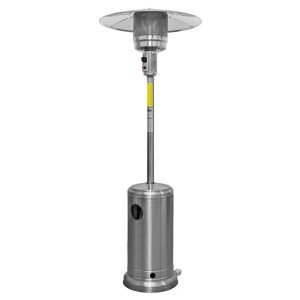Are You Responsible For The Buy Gas Radiant Heaters Budget? 12 Best Ways To Spend Your Money

Buying Gas Radiant Heaters: A Comprehensive Guide
Gas radiant heaters have actually gotten appeal recently for their performance and capability to offer immediate heat. As more homeowners and organizations try to find ways to keep their areas comfortable, comprehending the features, advantages, and factors to consider when purchasing these heating systems can be extremely helpful. This article looks into the intricacies of gas radiant heaters, assisting possible purchasers in making informed choices.
What are Gas Radiant Heaters?
Gas radiant heaters are gadgets that make use of propane or gas to emit heat directly into a room. Instead of heating the air, they warm items and people in their vicinity, offering convenience quicker and efficiently. These heaters are popular for both indoor and outdoor settings due to their flexibility and efficiency.
Secret Features of Gas Radiant Heaters
- Direct Heating: Unlike traditional heaters that warm the air, gas radiant heaters supply direct heat, making them an efficient option for quickly heating up areas.
- Mobility: Many models are readily available as portable systems, allowing them to be easily moved from one location to another.
- Fuel Variety: Gas radiant heaters can be powered by natural gas or propane, offering users flexibility based on availability and choice.
- Adjustable Settings: Most gas radiant heaters featured adjustable heat settings, enabling users to personalize the level of heat based on their needs.
Advantages of Gas Radiant Heaters
- Energy Efficiency: These heaters convert gas into heat efficiently, resulting in lower energy costs compared to electrical heaters.
- Quick Heating: Radiant heat is felt practically right away, making these heaters ideal for sudden temperature drops.
- Low Maintenance: Gas radiant heaters normally require less maintenance than electric models, making them a hassle-free choice.
- Ecologically Friendly: When powered by clean gas, these heaters can be a more environmentally sustainable choice compared to other heating methods.
Types of Gas Radiant Heaters
When it pertains to choosing a gas radiant heater, it's necessary to understand the various types readily available. Below are the most typical options:
- Indoor Gas Radiant Heaters: Designed for indoor areas, these heaters are typically vented or unvented and typically included built-in security functions.
- Outdoor Gas Radiant Heaters: Commonly used in patio areas or outdoor dining locations, these heaters are designed to endure the components.
- Wall-Mounted Gas Radiant Heaters: A space-saving choice, these units are perfect for smaller sized spaces and can be outfitted with different heat outputs depending on the location's needs.
- Freestanding Gas Radiant Heaters: These portable designs can be utilized in different locations, best for those who need flexibility.
Buying Guide: How to Choose the Right Gas Radiant Heater
When acquiring a gas radiant heater, a number of aspects must be considered to guarantee you select the right design for your space:
1. Heating Capacity
- Measured in BTUs (British Thermal Units), the heater's capability determines just how much area it can efficiently warm. visit this site must evaluate their specific needs based upon space size.
| Space Size (sq ft) | Recommended BTUs (for Gas Radiant Heaters) |
|---|---|
| 100 - 200 | 5,000 - 10,000 BTUs |
| 200 - 400 | 10,000 - 20,000 BTUs |
| 400 - 600 | 20,000 - 30,000 BTUs |
| 600 - 800 | 30,000+ BTUs |
2. Kind of Gas
- Think about whether you will be using propane or gas, as different heaters accommodate various fuel types.
3. Safety Features
- Try to find models equipped with safety functions such as automated shut-off valves, tip-over security, and oxygen exhaustion sensing units.
4. Installation Requirements
- Some heaters might need expert installation, particularly vented designs. Make sure to consider the costs and requirements related to installation.
5. Portability
- If flexibility is important, think about portable designs that can be quickly moved from one location to another.
Setup and Maintenance
Gas radiant heaters are usually simple to install, specifically portable models. Nevertheless, vented options may demand expert installation to guarantee they satisfy local safety codes.
Upkeep generally includes:
- Regular cleaning to prevent dust buildup.
- Examining gas connections and fittings for leakages.
- Ensuring security functions are functional.
Suggestion: Regular checks around the unit can help extend its life expectancy and preserve safety.
Frequently Asked Questions (FAQs)
Q1: Are gas radiant heaters safe for indoor use?A1: Yes
, as long as they are correctly vented and equipped with necessary security functions, they can be securely used inside.
Q2: Can gas radiant heaters be used in enclosed spaces?A2: Unvented gas heaters can position dangers in enclosed spaces due to possible suffocation or carbon monoxide buildup. Constantly ensure enough ventilation. Q3: How do I understand what size heater I need?A3: The appropriate size depends upon the area you intend to heat. Describe the BTU chart
above to determine your needs. Q4: What is the distinction in between propane and gas heaters?A4: The main distinction lies in their energy source
; propane is delivered by means of tanks, while natural gas is typically piped into homes. Q5: How can I maximize efficiency?A5: Ensure the heater is appropriately sized for your space, preserve it frequently, and consider using it in combination
with other heating techniques for maximum comfort. Gas radiant heaters can be a great addition to any home or business, offering energy-efficient and quick heating solutions. By comprehending the different types, features, and considerations
when purchasing, buyers can make informed decisions that meet their heating requires. With the best option, these heaters offer convenience, reliability, and a welcoming environment throughout colder seasons.

